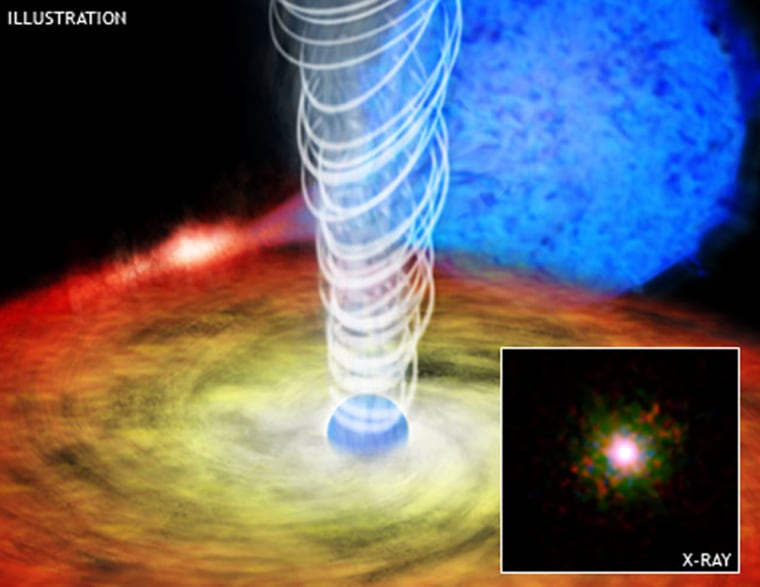Black holes are not the only objects in the universe that spew powerful jets from their poles. Dead, smoldering stars can emit them, too, and the jets they create rival and might even surpass those fired by black holes, scientists find.
The discovery, to be detailed in an upcoming issue of The Astrophysical Journal Letters, shows that the unusual properties of black holes-like the presence of an event horizon and the lack of an actual surface-are not required for jets to form.
"Gravity appears to be the key to creating these jets, not some trick of the event horizon," said study leader Sebastian Heinz of the University of Wisconsin at Madison.
Using NASA's Chandra X-ray Observatory, scientists spotted the jet 20,000 light-years from Earth in Circinus X-1, a system where a spinning stellar corpse known as a neutron star is orbiting a normal star several times the mass of the sun. A neutron star forms when the material left over from a supernova explosion collapses into a dense core.
Many jets have been found near black holes, but the Circinus X-1 jet is the first extended X-ray jet associated with a neutron star.
Heinz and his colleagues estimate that a surprisingly high percentage of the energy created by material falling onto the neutron star is used to power the jet.
"In terms of energy efficiency across the universe, this result shows that neutron stars are near the top of the list. This jet is almost as efficient as one from a black hole," said study team member Norbert Schulz of the Massachusetts Institute of Technology.
Slideshow 12 photos
Month in Space: January 2014
The Chandra findings also help clear up a mystery about how diffuse lobes of radio-emitting gas around Circinus X-1 are created. The researchers found the X-ray jets of high-energy particles spewed by the system's neutron star are powerful enough to maintain the lobes.
"We've seen enormous radio clouds around supermassive black holes at the centers of galaxies," Heinz said. "What's unusual here is that this pocket-sized version, relatively speaking, is being powered by a neutron star, not a black hole."
Heinz and his team spotted two extended features shaped like a "V" in the Chandra observations of Circinus X-1 that they speculate could represent the outer walls of a wide jet. Another possibility is that the features represent two separate, narrow jets fired at different times as the neutron star wobbles to and fro in space like a spinning top.
If this second scenario is correct, Circinus X-1 would have one of the longest, narrowest jets found to date, surpassing even those discovered around black holes.

